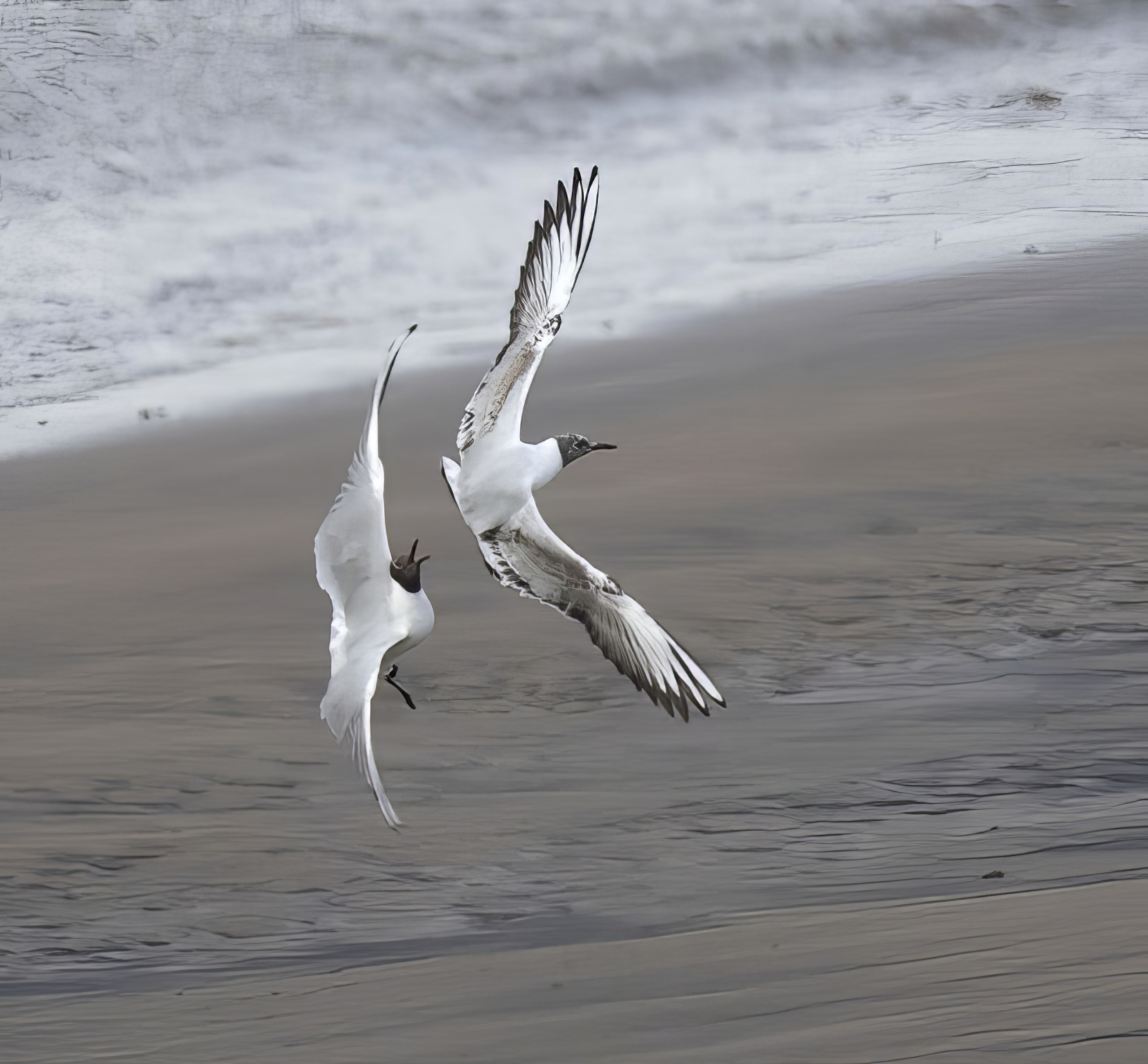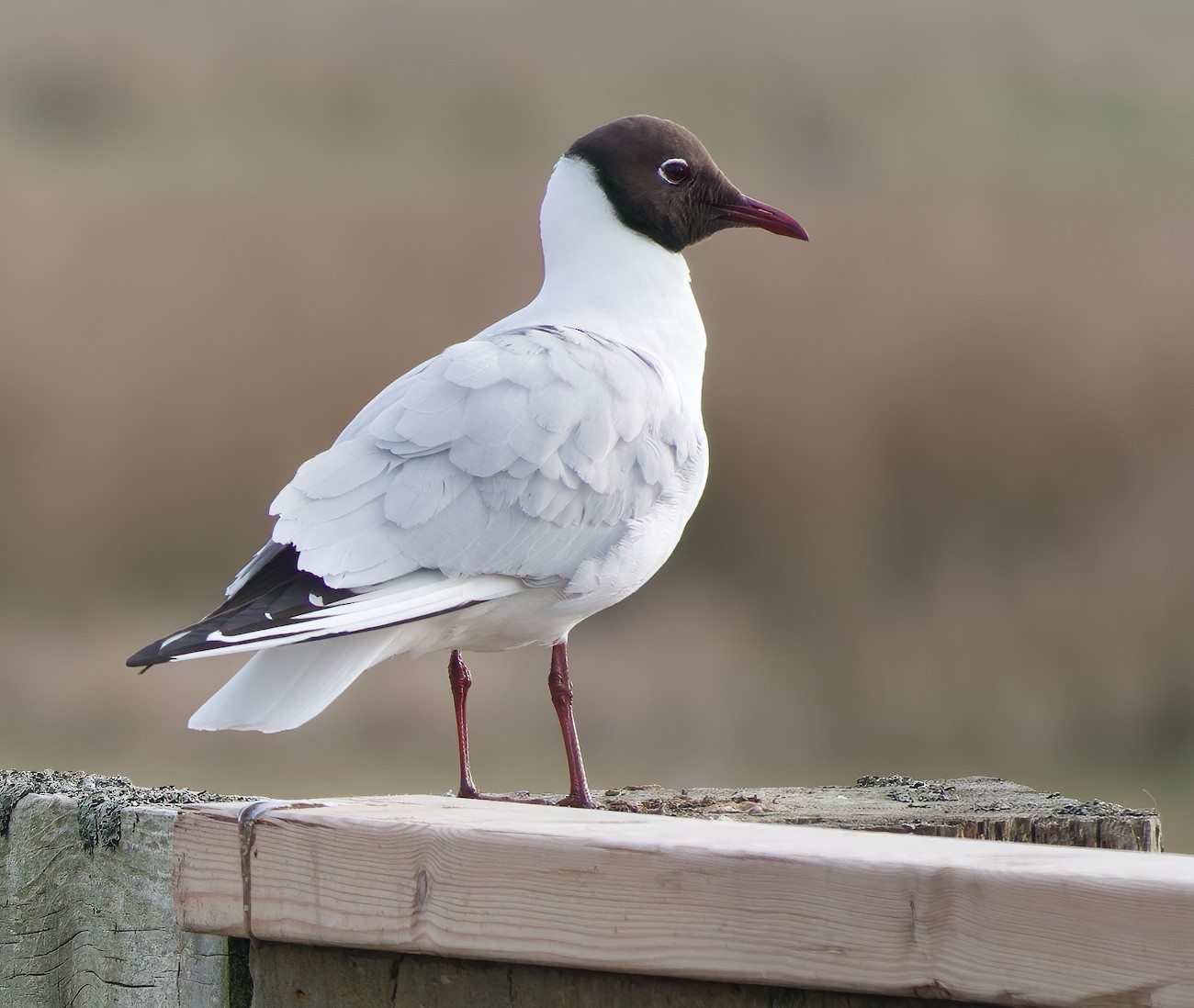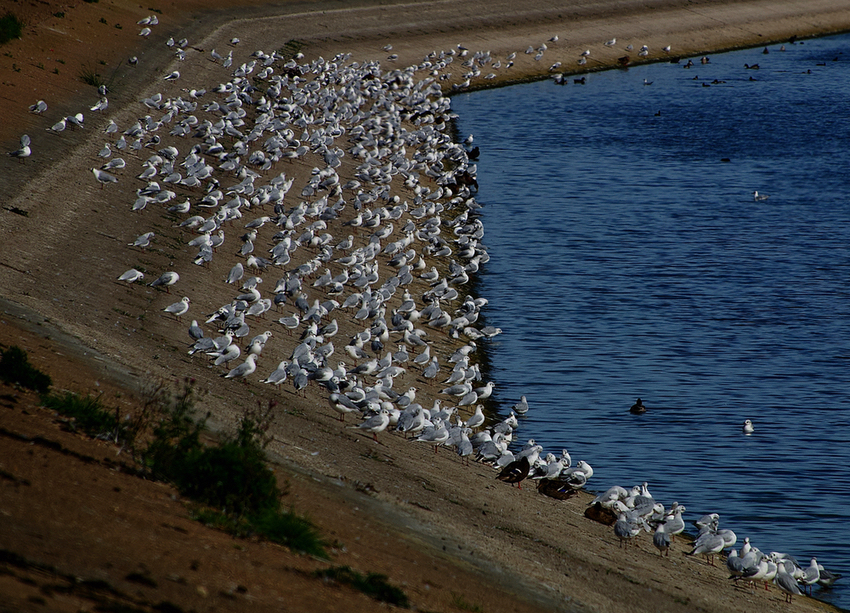Black-headed Gull Chroicocephalus ridibundus
Very common resident, passage migrant and winter visitor.



Our most frequently recorded gull everywhere in the county. In the late 1980s, the Atlas estimated the breeding population at some 3,000 to 4,000 pairs with a winter population approaching 100,000 birds. In the ensuing 30 years all the large colonies that formerly bred on saltmarshes like Grainthorpe Marsh, Frampton Marsh and Holbeach Marsh appear to have been abandoned for islands in former gravel pits like Whisby and lagoons like those created at RSPB Frampton Marsh and Gibraltar Point NNR. There has been no formal, recent estimate of the size of our seabird populations and the latest JNCC Seabird Census is currently ongoing. Probably the largest colony at present is at Whisby NR which has held around 1,000 pairs in recent years. The wintering population is difficult to assess as WeBS counts tend not be held during evening roosts. The average five year rolling mean count to 2018/19 is around 45000 which is likely an underestimate. Numbers tend to peak in late summer/ early autumn during peak agricultural ploughing.
Many colour-ringed Black-headed Gulls have been seen, and continue to be seen in the county, and thanks to the dedicated few who report their sightings there is a growing body of evidence to indicate their origins; up to 2018 one observer had records from 38 such sightings. Some of these are as follows:
Adult Black-headed Gull White SEC was ringed as a 3CY+ in Skegness on January 16th 1987. It was then recorded annually in Denmark up until May 21st 2012 and later seen regularly at Middlemarsh Farm from December 12th 2012 until December 24th 2013 making it over 28 years old.
Adult Black-headed Gull Red HFOR was seen at Gibraltar Point NNR on July 24th 2014. It was ringed earlier the same year at a landfill site in Hungary. It was the first ever colour-ringed Black-headed Gull to be recorded in the UK from Hungaryand and was last seen at Middlemarsh Farm on October 30th 2018.
There are many other sightings and here’s a flavour of some of these: birds ringed in Denmark, Sweden, Norway and Germany regularly winter in coastal car parks in Lincolnshire. White VE57 (Denmark) has spent seven winters in and around Sea View car park in Mablethorpe. Three more all favour the Festival Car Park in Skegness - White VEC (Sweden), has spent five winters there, Green JHA2 (Norway) has spent two winters there and Black X49C (Germany) has also spent two winters there.
(Account as per new Birds of Lincolnshire (2021), included September 2022)
